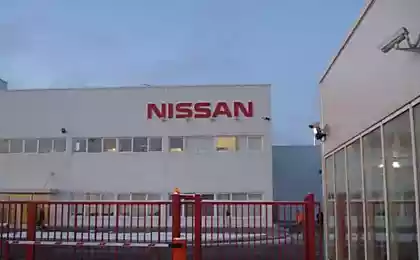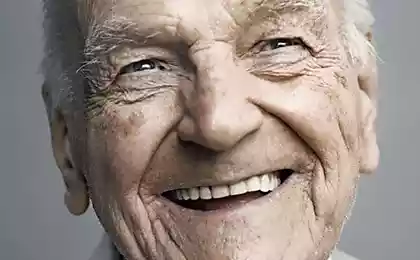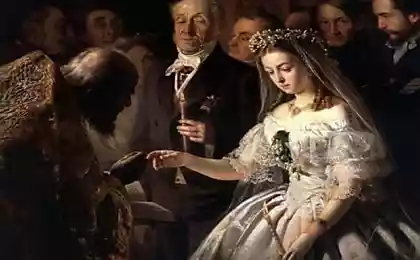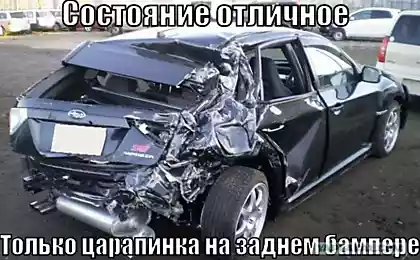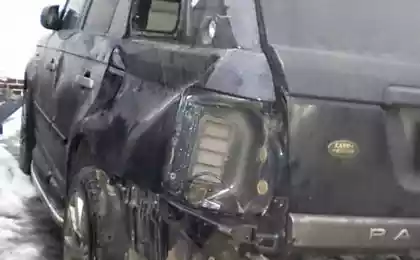1057
Centenarians pipeline: from 11 years old and older
Modern motorist used to the fact that the machine, which produces more than five years, is already close to that, to be called old, but until recently most of the models easily produced for decades.
Obviously, marketers have won - these days to sell a car without endures lately any changes and improvements, is very, very hard. Manufacturers have resorted to extreme measures - at 2, 5-3 year, be sure to restyle the current model, and another 2-3 years - a change of generation. However, until recently it was the exact opposite - a successful model in no hurry to take out of production, and if upgraded, then with minimal external changes.
A small overview of car-assembly line of centenarians - those produced and sold successfully for many years. Some of these machines are no longer manufactured, while others are in the prime of life, and peace is clearly not going to.

Mercedes Benz W124- 11 years on the assembly line; discontinued
Family Mercedes Benz W124 - sedan, coupe, wagon (wear index S124), and convertible (A124) - became classics during his lifetime. Debuting at the end of 1984, "one hundred and twenty four" immediately became super popular - European taxi companies interested in innovation, corporate fleets of large companies, businessmen, and just wealthy car enthusiasts.
The car was not cheap, but the build quality, the level of equipment and a rigorous, elegant design (by - Bruno Sacco) of the cost. Mercedes-Benz W124 was a lot of modifications - apart from the standard sedan, wagon, coupe and convertible, you can find also a limousine, ambulance and a hearse on the basis of "Mercy." We should also mention the version 500E (after restyling in the early nineties - E500) - «charged» version of "Mercedes" (pictured), hand-built with the participation of engineers from Porsche.
Even today, this car is in excellent condition can cost 40-50 thousand euros. On the reliability of Mercedes-Benz W124 is legendary - they say that even in Latvia can be found in the taxi version of the 200D with mileage of about two million kilometers. And nothing runs ...

Saab 9-5 - 13 years on the assembly line; discontinued
Saab 9-5 - the flagship of the Swedish company - was first introduced in autumn 1997 as a replacement for the outdated model 9000 (incidentally, also produced more than a decade). The design of the car was already somewhat conservative, if not obsolete. However, the novelty warmly embraced - the car could boast a rich standard equipment, high level of safety, and relatively low price. Traditionally, most of all, "Saab" buy the North American market, and 9-5 is not an exception - the lion's share of cars had been sold in the USA. Restyling 2005 some automotive experts tried to pass off as a radically new generation of 9-5, but the car remains the same - much has changed only the front part, generously coated with chromium. The next generation 9-5 was released in 2010. Alas, it has not existed for a long time - in 2012, Saab has ceased to exist.

Jaguar - XJS - '21 on the conveyor; discontinued
Luxury car GT class British company Jaguar - XJS - issued in the period from 1975 to 1996. Jaguar XJS was designed based on the classic XJ sedans and replaced in the scale model of E-Type (or XK-E) in September 1975.

Lada-2106 - 30 years on the assembly line; discontinued
VAZ-2106 is probably the most massive Soviet and then the Russian cars - popular "Six" has overtaken even the ancestor of "penny" - VAZ-2101. VAZ-2106 produced the Volga automobile plant in 1976; In 1998 production was partially transferred to the company "RosLada" in Syzran, and in 2002 - the plant "IzhAvto" in Izhevsk, where he continued until the removal of the model off the assembly line in January 2006. Engine "six" (the amount - 1, 6 liters, power - 78 horsepower) is the most powerful Soviet serial subcompact car engine. In addition, it is interesting that in the eighties of the last century, the VAZ-2106 was worth more "Niva" - the car structurally more complex and modern. Experts attribute this to the high popularity of the "six" - "Soviet" Mercedes ".
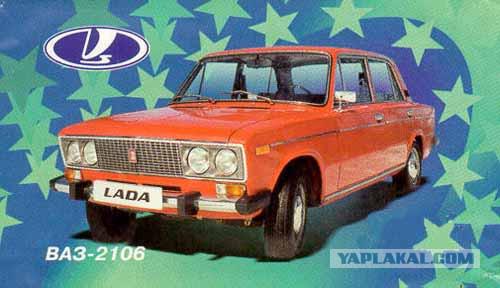
Land Rover Defender - 30 years on the assembly line; Issue proceeds
British SUV Land Rover Defender is descended from the fifties of the last century, when the first "all-terrain vehicle" of the brand. The current "Def" - actually a vehicle of the sample in 1983 with minimal external changes. Modern SUV changed the "look" of headlights, a slightly modernized interior, equipped with modern engines. Nevertheless, the essence of the machine, as well as the body, remained the same - it's the same square, in the management of uncomfortable, cramped, but damn traveled SUV.
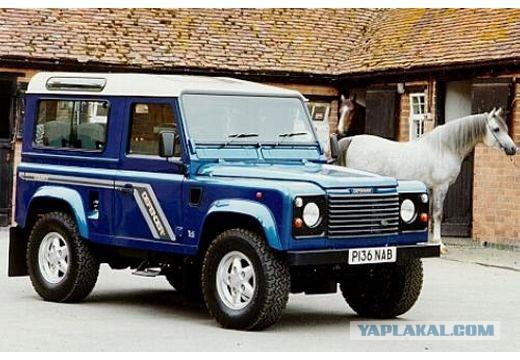
Mercedes-Benz G-classe - '34 on the conveyor; Issue proceeds
In the late seventies Shah of Iran ordered the company Mercedes-Benz luxury SUV reliable for the army. German engineers coped with the problem, but the luxury customer "Merci" were not needed - in 1979 in Iran Islamic revolution. "Mersedesovtsy" not confused by introducing G-Class (Gelandewagen - "off-road vehicle") as a completely civilian car on one of the dealers. Popularity NEW dialed immediately, and did not lose her now 34 years. If at the beginning of its automotive life G-Class produced in fairly good, but the relatively poor pickings, since the beginning of the nineties (thanks to the customers of the former USSR) "helico" was literally a luxury limousine - were stunning options powerful engine versions AMG, crazy ... Representatives of tuning Mercedes-Benz reports that will produce ultra-modern G-Class in superarhaichnom body has at least ten years. Then this car, most likely, simply does not pass the European test passive safety - "helico" very tall with a square hood and is not particularly "concerned about the lives and health of pedestrians", as required by EU directives.

VW Golf 1 - 35 years on the assembly line; discontinued
Production of the first generation Volkswagen Golf was started in 1974 in Germany - the car was so successful that it is a household name for all the urban middle-class cars. Directly in Germany first "Golf" produced until 1983, did not appear until the second generation of the car. The ancestor of the class, however, was in no hurry to retire - Volkswagen management has decided that it would be foolish to stop the production of such a simple, popular and cheap cars. Therefore, the assembly of Golf established in other countries - not so spoiled cars like Western Europe. In addition to the German Wolfsburg, VW Golf 1 was carried out in Melbourne, Australia, the US New Stanton, Uitenhage, South Africa, Mexico Puebla and the Bosnian Sarajevo. The last of the first generation Volkswagen Golf was released in South Africa (in the country, he was named CitiGolf) in 2009.

Lada Niva - 36 years on the assembly line, the release continues
Legendary "Niva" VAZ-2121 in 1977 became the ancestor of a class of compact crossovers - this car was not even the best western brands. From the start of series production of "Niva" became very popular abroad was the Soviet Union - by the beginning of the eighties is ready more than 80% of the outstanding Soviet crossovers sold in Europe, USA, Canada and Japan under the name Lada 4x4. At the turn of 70-80-ies of the last century, the Western media comfort car "Niva" was assessed as very high (often tests were compared directly with the Lada 4x4 "luxury" SUV Range Rover and Mercedes-Benz G-Class), which, combined with high maneuverability, good design and low price for many years has made Russian car worldwide bestseller. One-sixth of sushi "Niva" was not very popular - the Soviet consumer frightened cramped interior, unusual appearance, as well as the price approaching the best passenger cars Union. The release of "Niva" continues - recently "AvtoVAZ" said it plans to upgrade the legendary crossover. Among the improvements - the two-point installation of windshield washer nozzles, as well as factory-tinted glass. "Advanced West" on such improvements laughs, but "Field" buys regularly - Lada 4x4 dealerships are even in Calgary, Canada, and Melbourne, Australia.

Citroen 2CV - '41 on the conveyor; discontinued
Citroen 2CV - the car in France and the people's favorite. Yes, he is not a handsome man, he was a utilitarian, cramped and hopelessly slow, but it gave the French the same as the Ford T - the Americans and the "Volkswagen Beetle" - the Germans - automotive freedom. The design of the Citroen 2CV implemented many original and innovative solutions. There were also negative aspects - a deliberately simplified and udeshevlёnnaya car carrying prestige of printing, like post-war Europe or microcar "Zaporozhets" in the USSR. Citroen 2CV was designed as superaccessible the price, easy to maintain and repair, utility vehicle suitable for unimproved roads and transport small loads - he was replaced by French farmers a horse and cart, townspeople - a bicycle cab. The car has received legkoobsluzhivaemy engine, adjustable torsion suspension, a relatively large clearance. Citroen 2CV was produced from 1949 to 1990. During this time, it was released about 7 million 2CV and various modifications based on it.

VW t2 - '63 on the conveyor; stop release this year
Minibus 2 Volkswagen Bus Type, introduced in 1950, has not only become an icon of lifestyle in a hippie-style, but also fulfilled an important social function, becoming a pioneer in the field of commercial vehicles in Western Europe. After serving her in Germany in 1967 Volkswagen T2 "moved" in Brazil, where small and medium businesses en masse was just beginning to develop, and a small minivan became for many aspiring entrepreneurs salvation. T2 has become so popular in South America, that the leadership of Volkswagen for many years saw no reason to stop its production. Assembling Volkswagen T2 not be stopped for many years, if not a minibus has fallen victim to changes in Brazilian laws that require all new cars sold in the country to have two airbags and anti-lock brakes as standard equipment. Of course, the car, whose design was created in the middle of the XX century, these options have not. That is why the production of VW T2 will stop at the end of 2013.

VW Beetle - 65 years on the assembly line, discontinued
Volkswagen Beetle (original title - Kafer; in the Russian-speaking environment - "Beetle") is the most popular car ever produced no change in the structure. The first "Beetle" was released in 1938 in Germany, the last Beetle left the gate has a Mexican plant in 2003. During this time it was made 21529464 "Zhukov". VW Kafer Development began in 1933, when the leadership of Germany, led by Hitler has set designers task to make available to every German car - the car, "which will put the wheels the whole country." By 1938, when the country was already built a well-developed network of highways, such a car - Volkswagen Kafer - was ready. During World War II, the production of civilian "Beetle" was suspended - instead, a fully identical platform manufactured military version of the car - Kubelwagen. Common urban "Beetle" is back on the conveyor in 1947, and was made in Germany before the beginning of the 80s. Then release the auto settled in Mexico, where for twenty-odd years, the car has managed to become the most popular in the country. In 2003, the factory in the city of Puebla was released last "Beetle".
Such an interesting choice, thank you for your attention!
Source auto
PS. he kata "elderly" Audi. The thickness of the metal) And just a classic =)
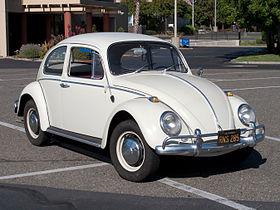
Source:
Obviously, marketers have won - these days to sell a car without endures lately any changes and improvements, is very, very hard. Manufacturers have resorted to extreme measures - at 2, 5-3 year, be sure to restyle the current model, and another 2-3 years - a change of generation. However, until recently it was the exact opposite - a successful model in no hurry to take out of production, and if upgraded, then with minimal external changes.
A small overview of car-assembly line of centenarians - those produced and sold successfully for many years. Some of these machines are no longer manufactured, while others are in the prime of life, and peace is clearly not going to.

Mercedes Benz W124- 11 years on the assembly line; discontinued
Family Mercedes Benz W124 - sedan, coupe, wagon (wear index S124), and convertible (A124) - became classics during his lifetime. Debuting at the end of 1984, "one hundred and twenty four" immediately became super popular - European taxi companies interested in innovation, corporate fleets of large companies, businessmen, and just wealthy car enthusiasts.
The car was not cheap, but the build quality, the level of equipment and a rigorous, elegant design (by - Bruno Sacco) of the cost. Mercedes-Benz W124 was a lot of modifications - apart from the standard sedan, wagon, coupe and convertible, you can find also a limousine, ambulance and a hearse on the basis of "Mercy." We should also mention the version 500E (after restyling in the early nineties - E500) - «charged» version of "Mercedes" (pictured), hand-built with the participation of engineers from Porsche.
Even today, this car is in excellent condition can cost 40-50 thousand euros. On the reliability of Mercedes-Benz W124 is legendary - they say that even in Latvia can be found in the taxi version of the 200D with mileage of about two million kilometers. And nothing runs ...

Saab 9-5 - 13 years on the assembly line; discontinued
Saab 9-5 - the flagship of the Swedish company - was first introduced in autumn 1997 as a replacement for the outdated model 9000 (incidentally, also produced more than a decade). The design of the car was already somewhat conservative, if not obsolete. However, the novelty warmly embraced - the car could boast a rich standard equipment, high level of safety, and relatively low price. Traditionally, most of all, "Saab" buy the North American market, and 9-5 is not an exception - the lion's share of cars had been sold in the USA. Restyling 2005 some automotive experts tried to pass off as a radically new generation of 9-5, but the car remains the same - much has changed only the front part, generously coated with chromium. The next generation 9-5 was released in 2010. Alas, it has not existed for a long time - in 2012, Saab has ceased to exist.

Jaguar - XJS - '21 on the conveyor; discontinued
Luxury car GT class British company Jaguar - XJS - issued in the period from 1975 to 1996. Jaguar XJS was designed based on the classic XJ sedans and replaced in the scale model of E-Type (or XK-E) in September 1975.

Lada-2106 - 30 years on the assembly line; discontinued
VAZ-2106 is probably the most massive Soviet and then the Russian cars - popular "Six" has overtaken even the ancestor of "penny" - VAZ-2101. VAZ-2106 produced the Volga automobile plant in 1976; In 1998 production was partially transferred to the company "RosLada" in Syzran, and in 2002 - the plant "IzhAvto" in Izhevsk, where he continued until the removal of the model off the assembly line in January 2006. Engine "six" (the amount - 1, 6 liters, power - 78 horsepower) is the most powerful Soviet serial subcompact car engine. In addition, it is interesting that in the eighties of the last century, the VAZ-2106 was worth more "Niva" - the car structurally more complex and modern. Experts attribute this to the high popularity of the "six" - "Soviet" Mercedes ".

Land Rover Defender - 30 years on the assembly line; Issue proceeds
British SUV Land Rover Defender is descended from the fifties of the last century, when the first "all-terrain vehicle" of the brand. The current "Def" - actually a vehicle of the sample in 1983 with minimal external changes. Modern SUV changed the "look" of headlights, a slightly modernized interior, equipped with modern engines. Nevertheless, the essence of the machine, as well as the body, remained the same - it's the same square, in the management of uncomfortable, cramped, but damn traveled SUV.

Mercedes-Benz G-classe - '34 on the conveyor; Issue proceeds
In the late seventies Shah of Iran ordered the company Mercedes-Benz luxury SUV reliable for the army. German engineers coped with the problem, but the luxury customer "Merci" were not needed - in 1979 in Iran Islamic revolution. "Mersedesovtsy" not confused by introducing G-Class (Gelandewagen - "off-road vehicle") as a completely civilian car on one of the dealers. Popularity NEW dialed immediately, and did not lose her now 34 years. If at the beginning of its automotive life G-Class produced in fairly good, but the relatively poor pickings, since the beginning of the nineties (thanks to the customers of the former USSR) "helico" was literally a luxury limousine - were stunning options powerful engine versions AMG, crazy ... Representatives of tuning Mercedes-Benz reports that will produce ultra-modern G-Class in superarhaichnom body has at least ten years. Then this car, most likely, simply does not pass the European test passive safety - "helico" very tall with a square hood and is not particularly "concerned about the lives and health of pedestrians", as required by EU directives.

VW Golf 1 - 35 years on the assembly line; discontinued
Production of the first generation Volkswagen Golf was started in 1974 in Germany - the car was so successful that it is a household name for all the urban middle-class cars. Directly in Germany first "Golf" produced until 1983, did not appear until the second generation of the car. The ancestor of the class, however, was in no hurry to retire - Volkswagen management has decided that it would be foolish to stop the production of such a simple, popular and cheap cars. Therefore, the assembly of Golf established in other countries - not so spoiled cars like Western Europe. In addition to the German Wolfsburg, VW Golf 1 was carried out in Melbourne, Australia, the US New Stanton, Uitenhage, South Africa, Mexico Puebla and the Bosnian Sarajevo. The last of the first generation Volkswagen Golf was released in South Africa (in the country, he was named CitiGolf) in 2009.

Lada Niva - 36 years on the assembly line, the release continues
Legendary "Niva" VAZ-2121 in 1977 became the ancestor of a class of compact crossovers - this car was not even the best western brands. From the start of series production of "Niva" became very popular abroad was the Soviet Union - by the beginning of the eighties is ready more than 80% of the outstanding Soviet crossovers sold in Europe, USA, Canada and Japan under the name Lada 4x4. At the turn of 70-80-ies of the last century, the Western media comfort car "Niva" was assessed as very high (often tests were compared directly with the Lada 4x4 "luxury" SUV Range Rover and Mercedes-Benz G-Class), which, combined with high maneuverability, good design and low price for many years has made Russian car worldwide bestseller. One-sixth of sushi "Niva" was not very popular - the Soviet consumer frightened cramped interior, unusual appearance, as well as the price approaching the best passenger cars Union. The release of "Niva" continues - recently "AvtoVAZ" said it plans to upgrade the legendary crossover. Among the improvements - the two-point installation of windshield washer nozzles, as well as factory-tinted glass. "Advanced West" on such improvements laughs, but "Field" buys regularly - Lada 4x4 dealerships are even in Calgary, Canada, and Melbourne, Australia.

Citroen 2CV - '41 on the conveyor; discontinued
Citroen 2CV - the car in France and the people's favorite. Yes, he is not a handsome man, he was a utilitarian, cramped and hopelessly slow, but it gave the French the same as the Ford T - the Americans and the "Volkswagen Beetle" - the Germans - automotive freedom. The design of the Citroen 2CV implemented many original and innovative solutions. There were also negative aspects - a deliberately simplified and udeshevlёnnaya car carrying prestige of printing, like post-war Europe or microcar "Zaporozhets" in the USSR. Citroen 2CV was designed as superaccessible the price, easy to maintain and repair, utility vehicle suitable for unimproved roads and transport small loads - he was replaced by French farmers a horse and cart, townspeople - a bicycle cab. The car has received legkoobsluzhivaemy engine, adjustable torsion suspension, a relatively large clearance. Citroen 2CV was produced from 1949 to 1990. During this time, it was released about 7 million 2CV and various modifications based on it.

VW t2 - '63 on the conveyor; stop release this year
Minibus 2 Volkswagen Bus Type, introduced in 1950, has not only become an icon of lifestyle in a hippie-style, but also fulfilled an important social function, becoming a pioneer in the field of commercial vehicles in Western Europe. After serving her in Germany in 1967 Volkswagen T2 "moved" in Brazil, where small and medium businesses en masse was just beginning to develop, and a small minivan became for many aspiring entrepreneurs salvation. T2 has become so popular in South America, that the leadership of Volkswagen for many years saw no reason to stop its production. Assembling Volkswagen T2 not be stopped for many years, if not a minibus has fallen victim to changes in Brazilian laws that require all new cars sold in the country to have two airbags and anti-lock brakes as standard equipment. Of course, the car, whose design was created in the middle of the XX century, these options have not. That is why the production of VW T2 will stop at the end of 2013.

VW Beetle - 65 years on the assembly line, discontinued
Volkswagen Beetle (original title - Kafer; in the Russian-speaking environment - "Beetle") is the most popular car ever produced no change in the structure. The first "Beetle" was released in 1938 in Germany, the last Beetle left the gate has a Mexican plant in 2003. During this time it was made 21529464 "Zhukov". VW Kafer Development began in 1933, when the leadership of Germany, led by Hitler has set designers task to make available to every German car - the car, "which will put the wheels the whole country." By 1938, when the country was already built a well-developed network of highways, such a car - Volkswagen Kafer - was ready. During World War II, the production of civilian "Beetle" was suspended - instead, a fully identical platform manufactured military version of the car - Kubelwagen. Common urban "Beetle" is back on the conveyor in 1947, and was made in Germany before the beginning of the 80s. Then release the auto settled in Mexico, where for twenty-odd years, the car has managed to become the most popular in the country. In 2003, the factory in the city of Puebla was released last "Beetle".
Such an interesting choice, thank you for your attention!
Source auto
PS. he kata "elderly" Audi. The thickness of the metal) And just a classic =)

Source:





